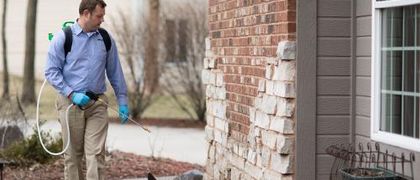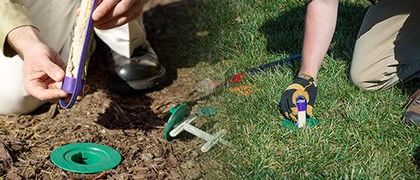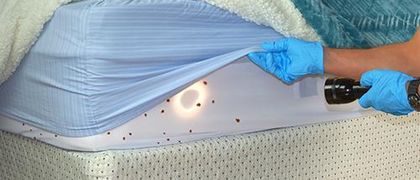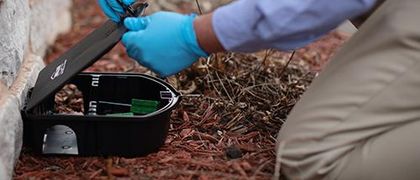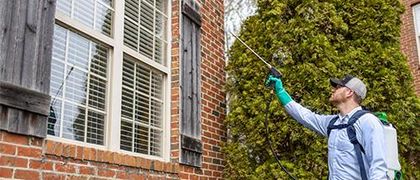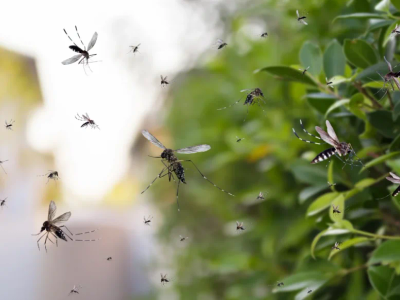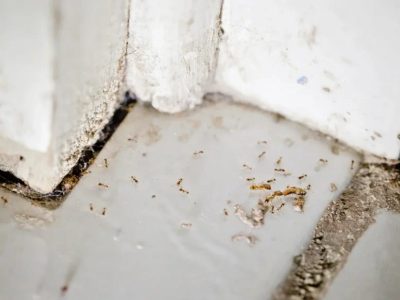What do mice look like?
- Size: 2-4 in. long and under 1 oz. in weight
- Color: Light brown to light gray
- Body Structure: Small, slender bodies covered in short hair. The common house mouse also has large ears, pointed snouts, small eyes, and small feet.
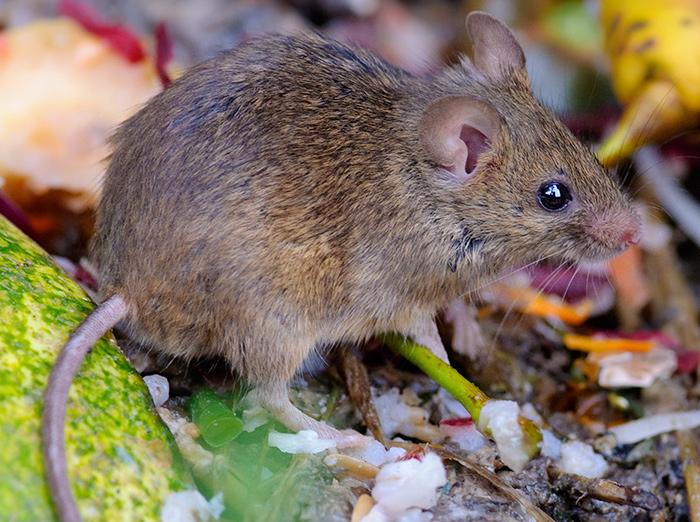
Characteristics of mice
The house mouse matures quickly and can produce offspring at two months of age. In a lifetime, a typical house mouse may have upwards of 50 offspring, producing litters every 40-50 days with up to seven offspring in each litter. The average life span of a house mouse is around one year. The house mouse has a keen sense of hearing and communicates with other mice by emitting squeaks, which occasionally are audible to humans.
When are mice most active?
Where do mice nest?
Outdoors, mice nest in burrows, in piles of leaves, beneath dense underbrush or tall grasses, in thick shrubbery, underneath debris. They’ve even been found inside cars parked outside.
Indoors, mice nest in areas where they’re warm, safe from predators, and close to food. Common nesting sites include, but are not limited to:
- Attics
- Basements
- Wall voids
- Garages
- Closets
- Under or inside of larger appliances
- Under kitchen sink
- Inside cabinets and drawers
- Ceilings
What do mice eat?
House mice are omnivorous and will eat grains, fruit, seeds, and pet food, as well as food commonly found in kitchen pantries.
Are mice dangerous?
Unfortunately, mice can carry disease and contaminate food with their droppings and urine. This can lead to health risks, including the spread of salmonella which can cause diarrhea, fever, and abdominal pain. Inhaling dried feces may cause allergies or trigger asthma. Mouse urine has been linked to allergies in children.
Additionally, mice introduce fleas and ticks into homes.
Finally, mice are infamous for chewing and damaging wood, drywall, and other building materials, as well as personal property. They also chew through electric wires, which can spark house fires.
Why do I have a mouse infestation?
Mice are commensal rodents, which means they rely, in part, on humans for their survival. They need food, water, and shelter; if you’re home provides all three AND they’re able to get inside, you’re probably going to have a mouse problem at some point.
How do I get rid of mice?
For effective rodent control services that get rid of mice and rats from your home or business, you’ll want to reach out to a licensed pest control company. At Miller Pest & Termite, we’ve been exterminating mice and other rodents for more than 20 years and are ready to help Midwesterners solve their rodent infestations, no matter how severe.
How can I prevent a mouse problem?
To prevent mice from infesting your property, we highly recommend implementing the following rodent prevention tips:
- Seal all potential entry points including gaps around doors
- Eliminate potential water sources inside and outside the structure
- Keep the kitchen and pantry immaculate
- Clean up food and drink spills as soon as they occur
- Store kitchen trash in a container with a tight-fitting lid
- Clear away yard debris to eliminate potential nesting sites
- Trim back tree branches as well as shrubs and bushes so that they do not touch the exterior of the house
- Keep tall grass and dense overgrowth trimmed back
- Stop feeding wildlife (i.e., bird feeders)
- Harvest vegetable gardens regularly
- Pick up pet waste


Get Help Now!





